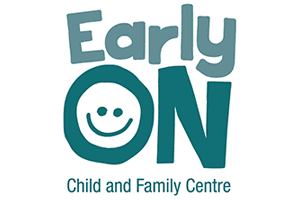In vitro fertilization (IVF) is a complex, often emotional process designed to assist individuals and couples in achieving pregnancy when natural conception is not possible. It has revolutionized reproductive medicine, offering hope for many who struggle with infertility, same-sex couples, and those with certain medical conditions.
IVF involves several key steps, each tailored to the individual’s unique needs, to increase the chances of a successful pregnancy. The journey typically begins with fertility evaluations to assess both partners’ reproductive health. For women, tests may include hormone checks, an ultrasound to examine the ovaries, and sometimes a uterine exam. For men, a semen analysis is usually conducted to evaluate sperm count, motility, and shape.
Preparing for IVF Treatment
Once both partners are cleared to proceed, the treatment phase begins. A woman undergoes hormonal therapy to stimulate the ovaries to produce multiple eggs. Normally, one egg is released each month, but IVF requires several eggs to maximize the chances of fertilization. Medications such as follicle-stimulating hormone (FSH) or luteinizing hormone (LH) are often used, and these help the ovaries develop multiple follicles containing eggs.
This ovarian stimulation process usually takes 1-2 weeks, during which the doctor monitors progress using blood tests and ultrasounds. These tests track hormone levels and the development of follicles in the ovaries. If the response to the medication is not optimal, the cycle may be canceled and adjusted before trying again.
Egg Retrieval and Fertilization
Once the eggs are ready, they are retrieved through a minor surgical procedure performed under sedation. The doctor uses a thin needle inserted through the vaginal wall to collect the eggs from the ovaries. This procedure typically takes 20-30 minutes and is done in a clinic or outpatient facility.
After egg retrieval, the sperm is collected and the fertilization process begins. In cases where sperm quality is a concern, intracytoplasmic sperm injection (ICSI) might be used, where a single sperm is injected directly into an egg to facilitate fertilization.
The fertilized eggs, now embryos, are monitored in the lab for several days to determine their quality and development. Typically, embryos are cultured for about 3 to 5 days before being transferred to the uterus.
Embryo Transfer
The embryo transfer is the final step in the IVF cycle. A doctor places one or more embryos directly into the woman’s uterus using a thin catheter. This procedure is relatively painless, though it may be accompanied by some mild cramping or discomfort. The goal is for the embryo(s) to implant in the uterine lining, which is prepared beforehand using progesterone supplements.
One of the critical decisions during this phase is how many embryos to transfer. The number is often determined by factors such as the woman’s age, the quality of the embryos, and previous IVF attempts. Medical guidelines and laws in some countries limit the number of embryos that can be transferred to reduce the risk of multiple pregnancies.
What Happens After IVF
After the embryo transfer, the woman waits to see if the embryo successfully implants, a process that typically takes about 10 to 14 days. A blood test is performed to check for pregnancy. If the test is positive, further monitoring is required to ensure the pregnancy is progressing well.
However, IVF is not always successful on the first try. It may take multiple cycles to achieve a pregnancy, and in some cases, doctors might recommend using donor eggs, sperm, or embryos, or even a gestational carrier. Moreover, some couples might have surplus embryos, which can be frozen and stored for future use.
Emotional and Financial Considerations
The IVF process can be physically taxing, emotionally draining, and expensive. Each cycle of IVF can cost thousands of dollars, not including medications and additional procedures like egg freezing or genetic testing. Insurance coverage varies widely, and not all health plans cover the costs of IVF.
Additionally, the emotional impact of IVF cannot be underestimated. Couples may face stress, disappointment, and anxiety as they navigate this path to parenthood. Counseling and support groups are available to help individuals and couples cope with the challenges IVF presents.
Success Rates and Future Prospects
IVF success rates depend on various factors, such as the woman’s age, the cause of infertility, and the quality of the embryos. For instance, younger women typically have higher success rates, as their eggs are more likely to be healthy. Advances in genetic screening, such as preimplantation genetic testing (PGT), have helped improve IVF outcomes by identifying the healthiest embryos before transfer.
Despite its challenges, IVF remains a beacon of hope for many who are unable to conceive naturally. New developments in fertility treatments, such as embryo freezing, egg donation, and genetic testing, continue to improve success rates and make IVF more accessible to those who need it.
In conclusion, IVF is a powerful tool for overcoming infertility and achieving pregnancy. While the process can be physically and emotionally taxing, it has enabled countless individuals and couples to build their families. As fertility technology continues to evolve, the chances of success only improve, offering new possibilities for those seeking to become parents.


